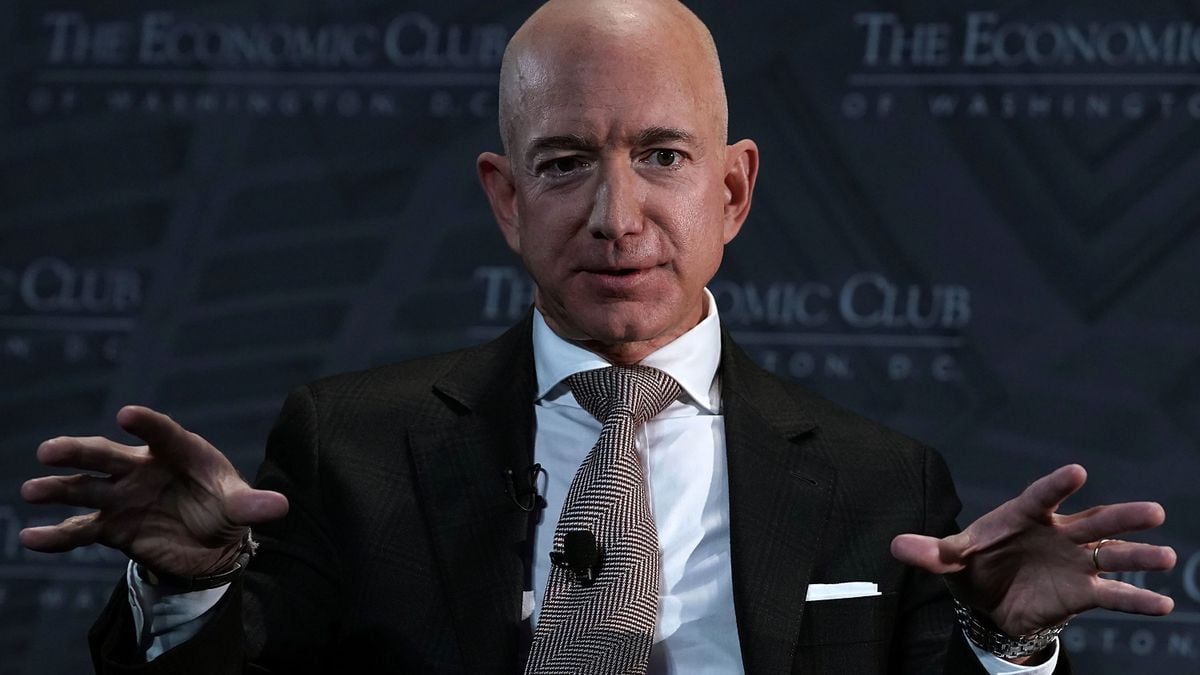Inflation has been a persistent challenge for retailers this year by creating cautious consumers. For weeks ahead of Black Friday, retailers have been encouraging consumers to spend on what is typically considered the busiest and most important day of the year for the industry.
“Retailers are seeing customers across the spectrum become more choiceful and discerning, which includes buying closer-to-need,” TD Cowen analysts led by Oliver Chen said in an emailed note regarding Black Friday.
In response to consumer reticence, retailers seemed to begin promoting their holiday shopping deals earlier than usual, with many major companies offering their deals over a month ahead of Black Friday.
Consumers spent a record $9.8 billion online on Black Friday, according to data from Adobe Analytics. That’s up 7.5% from last year.
But even with record online spend, TD Cowen lowered its guidance for the season, now expecting holiday spend to be up 2% to 3%. Previously, the organization forecast an increase of 4% to 5%, while the National Retail Federation estimated holiday spend would be up between 3% to 4% year over year.
With life largely back to normal for most since the early days of the COVID-19 pandemic, as of publication time, only a few issues had emerged. Early Friday morning, American Dream, one of the largest malls in the U.S., was briefly evacuated for a bomb threat. Operations at the New Jersey mall returned to normal following a law enforcement investigation, which determined there was no imminent threat, Gov. Phil Murphy said in a social media post. Mall representatives did not immediately respond to Retail Dive’s request for comment about the situation.
And some also chose Black Friday and major shopping destinations to make a statement about geopolitical events. Crowds gathered at shopping centers in several major U.S. cities to protest the Israel-Hamas War.
For retailers that didn’t see the performance or engagement they expected, there are likely plenty of good days ahead before the holiday season wraps up, according to Michael Brown, partner and Americas Retail Leader at Kearney.
“Never underestimate the consumer,” Brown said. “They’ve been very resilient. They will shop. They have obligations to family and other loved ones that they’re going to fulfill the gift list for. If not now, it will get busy out there — be ready, they’ll be coming.”
Here’s a look at some of what’s happened so far during one of the industry’s most important days of the year.
Winners
Mobile and online
For the first time, mobile shopping is expected to overtake desktop buying this holiday season, according to Adobe Analytics. More than half of spend online (51.2%) will be on mobile devices.
Adobe Analytics also found that smartphones accounted for $5.3 billion of all online sales on Black Friday, up 10.4% year over year. Smartphones also accounted for 54% of online sales. One reason is that improved shopping experiences make it easier to make purchases on mobile devices.
After a pandemic-era slide, shoppers surged back to buying on mobile, delivering an all-time high for that segment, according to data from Salesforce. In 2017, mobile represented 61% of digital traffic. That grew to 75% in 2020 and to 79% this year.
“We see the mobile phone being the bridge that connects online and in-store shopping,” Rob Garf, vice president and general manager of retail at Salesforce, told Retail Dive in an interview Friday.
“The days of getting to a store at five in the morning to take advantage of doorbusters are largely over,” Garf said. “Retailers are trying to emulate that urgency online by creating online doorbusters and some even provided perks to their loyalty members to allow early access to deals. So there is less of an urgency and an importance put on the store via Black Friday.”
For Cyber Week — the five days from Thanksgiving to Cyber Monday — Adobe expects $37.2 billion in online spending, up 5.4% from last year. That represents a nearly 17% share of the full holiday season.
Thanksgiving Day saw $5.6 billion in online spending, up 5.5% year over year, Adobe found. Black Friday generated $9.8 billion in online sales — up 7.5% from last year. But Cyber Monday is still expected to be the biggest online shopping day of the year, driving a record $12 billion in spending. That’s up about 6% year over year.
Black Friday’s online sales totaled $16.4 billion in the U.S., according to Salesforce. Discounting enticed consumers to buy on Friday, driving digital sales up 8% globally and up 9% in the U.S. Salesforce said the retail sectors with the highest online sales in the U.S. on Black Friday were general footwear and handbags (up 22%), sporting goods (up 21%), and health and beauty (up 17%).
Global data from Shopify also showed strong mobile performance for merchants on that platform. Mobile versus desktop 76% to 24%, respectively.
Although people appear to be spending strong on mobile and online, Adobe found that people, perhaps still feeling the pinch of inflation, are choosing cheaper fulfillment options. On Black Friday, about 80% of all online orders used standard shipping.
The calendar
Super Saturday, the Saturday immediately before Christmas, will be bolstered by an extra weekend shopping day this year since the holiday falls on a Monday. “So it could be a very, very big weekend for [retailers] where these consumers that have put off purchasing until the last minute will have two days that they’re not going to work to be able to spend those dollars,” Brown said.
But whether the calendar truly affects the bottom line will likely depend on the strength of discounts offered as the season winds down, according to Vivek Pandya, lead analyst with Adobe Digital Insights.
“There’ll be some growth momentum there, but I also think that consumers are in a place where they’re really maximizing this time to do a lot of shopping because of the perception around discounts,” Pandya said in an interview with Retail Dive. That may benefit consumers, Pandya said, by giving them the perception that “there’s a bit more time for them to get the goods online that they want.” And that in turn, may allow customers to choose different shipping options.
Pandya also called out a possible side effect of promotions and discounts – when people see a good deal, they might be inclined to buy something for themselves too in addition to buying a gift for someone else, which can also drive revenue up.
This year’s fiscal calendar may also deliver an added win for retailers. The calendar includes 53 weeks — versus the normal 52 — for accounting-related purposes, and many retailers have noted the extra days will likely deliver millions of dollars of added revenue for the top line when Q4 and full-year earnings reports start rolling in early next year.
Discount hunters
Back in 2020 and 2021, consumers were flush with stimulus cash and able to spend quickly and heavily, Pandya said. In doing so, that slowed the momentum on Thanksgiving, Black Friday and Cyber Monday.
“We call it discount chicken, where it’s always a game between the retailer and the consumer."

Rob Garf
Vice President and General Manager of Retail, Salesforce
But momentum and interest in shopping on those days seems to have resumed, Pandya said. Consumers are “well aware that they’re getting promoted deals all through the season, but they're expecting the best absolute deal to fall on Black Friday or Cyber Monday or Thanksgiving. And so that’s really why we’re seeing these days … renewed momentum,” Pandya said.
Garf echoed that sentiment.
Headed into the holiday season, “consumers have been really diligent and patient with making sure they get the best value. And we see this each year but it's even more acute this year,” Garf said.
“We call it discount chicken, where it's always a game between the retailer and the consumer. And the consumer more often than not ends up winning the game of discount chicken. They just wait for the best and final deal.”
Garf said retailers leaned into promotions highlighting the start of the season but “didn't come to the table with very attractive deals. And guess what happened because of the economic headwinds and consumers feeling the squeeze? They waited and they waited patiently.”
After patiently waiting, perhaps all year, consumers appeared to make their move this weekend after “finally seeing retailers step up to the plate,” Garf said.
Loser
Doorbuster decline
In recent years, it appears that one of Black Friday’s signature elements and draws — early morning doorbuster deals at big-box stores — have lost some of their urgency, experts said.
It's “not that kick-the-doors-down traffic we used to have on Black Friday in years past.”

Michael Brown
Partner and Americas Retail Leader, Kearney
During Friday store visits in the New York metro area, Brown said he saw strong traffic but “not that kick-the-doors-down traffic we used to have on Black Friday in years past.”
“I think we have the usual attractive Black Friday pricing. But what I think the consumers may be waiting for is for the next move. The retailer-consumer negotiation that’s going on right now with the way they shop and the way they negotiate with their dollars, and we’re going to see who blinks first,” Brown said.
But Garf added, “the store isn't dead. The store plays a critical role in the digital shopping experience. So rather than having to get to the store at 5 a.m. people can buy online and then pick it up in or around the store when they want, under their conditions.”






















